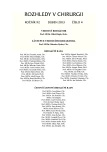-
Medical journals
- Career
Leriche’s syndrome
Authors: V. Třeška; B. Čertík; M. Čechura; J. Moláček; R. Šulc; K. Houdek
Authors‘ workplace: Chirurgická klinika FN a LFUK Plzeň, přednosta: Prof. MUDr. V. Třeška, DrSc.
Published in: Rozhl. Chir., 2013, roč. 92, č. 4, s. 190-193.
Category: Original articles
Overview
Introduction:
Leriche’s syndrome is defined as atherosclerotic occlusion of the infrarenal aorta and/or the iliac axis. It is associated with claudications or critical limb ischaemia and erectile dysfunction in men.Material and methods:
Twenty patients with Leriche’s syndrome were operated on at the Department of Surgery, University Hospital in Pilsen between 2008 and 2012. There were 6 women and 14 men of average age 60.3 years (41–76 years). Three patients were in group C and 17 in group D according to the Trans-Atlantic Inter-Society Classification IIb (TASC IIb). Fifteen patients suffered from chronic claudication or rest pain, five patients had acute limb ischaemic symptomatology. Aortobifemoral bypass with subsequent antiaggregation therapy was the only treatment option.Results:
Primary 30-day patency was 100%. 30-day postoperative mortality was 5% (one patient died of acute myocardial infarction). Two patients died in two and four years after the reconstruction (10%) due to cerebral ischaemia and bronchopneumonia. Only one extremity amputation was performed within the five-year interval after vascular reconstruction. All aortobifemoral reconstructions were patent in two months to five years after the operation. We had to manage only one false aneurysm in the groin three years after the aortobifemoral reconstruction.Conclusion:
Aortobifemoral bypass is a method of choice for the treatment of Leriche’s syndrome. Endovascular treatment is suitable for patients with severe comorbidities.Key words:
Leriche’s syndrome – symptomatology – treatment
Sources
1. Marrocco-Trischitta MM, Bertoglio L, Tshomba Y, Kahlberg A, Marone EM, Chiesa R. The best treatment of juxtarenal occlusion is and will be open surgery. J Cardiovasc Surg 2012;53 : 307–312.
2. Leriche R. Des obliterations arterielles hautes (obliteration de la terminaison de lęaorte) comme causes des insuffisances circulatoires des membres inferieurs. Bull Mem Soc Chir Paris 1923;49 : 1404–1406.
3. Beard JD. Which is the best revascularization for critical limb ischemia: Endovascular or open surgery? J Vasc Surg 2008;48 : 11S–16S.
4. Lin ChW, Liu ChY, Chen ChH. Acute renal infarction: An atypical presentation of Lericheęs syndrome. Intern Med 2012; 51 : 2485.
5. Brajkovic AV, Gornik I, Zlopasa O, Vrdoljak R, Radonic R, Gasparovic V. Patient with acute myocardial infarction and Leriche syndrome. Inter Med 2010;49 : 349–350.
6. Murao K, Minato M, Kubo Y. Improvement of palmoplantar pustulosis lesions after angioplasty for Leriche syndrome. Australas J Dermatol 2012;42 : 1440–1442.
7. Akhaddar A, Eljebbouri B, Saouab R, Boucetta M. Acute paraplegia revealing Leriche syndrome. Intern Med 2012; 51 : 981–982.
8. Klag T, Schnetzke U, Benz R, Zanow J, Glaser A, Porner TC, Scholl S, Reiter A, Hochhaus A, Rosee PL. Ann Hematol 2012;91 : 139–141.
9. Frederick M, Newman J, Kohlwes J. Leriche syndrome. J Gen Intern Med 2010;25 : 1102–1104.
10. Kocaturk H, Bayram E, Cengiz CM, Karaca L. Apical hypertrophic cardiomyopathy combined with bilateral renal artery stenosis in Leriche syndrome: a rare coexistence. Heart Surg Forum 2008;11 : 361–364.
11. Setacci C, Galzerano G, Setacci F, De Donato G, Sirignano P, Kamargianni V, Cannizzaro A, Cappelli A. Endovascular approach to Leriche syndrome. J Cardiovasc Surg 2012;53 : 301–306.
12. Jonkind V, Akkersdijk GJ, Yeung KK, Wisselink W. A systematic review of endovascular treatment of extensive aortoiliac occlusive disease. J Vasc Surg 2010;52 : 1376–1383.
13. Norgren L, Hiatt WR, Dormandy JA, Nehler MR, Harris KA, Fowkes FG. Inter-Society Consensus for the Management of Peripheral Arterial Disease (TASC II). J Vasc Surg 2007;45:S5–S7.
14. Tendera M, Aboyans V. ESC Pocket Guidelines – www.escardio. org/guidelines 2011.
15. Bjorses K, Ivancev V, Riva L, Manjer J, Uher P, Resch T. Kissing stents in the aortic bifurcation – a valid reconstruction for aortoiliac occlusive disease. Eur J vasc Surg 2008;36 : 424–431.
16. Klonaris C, Katsargyris A, Tsekouras N, Alexandrou A, Giannopoulos A, Bastounis E. Primary stenting for aortic lesions: from single stenoses to total aortoiliac occlusions. J Vasc Surg 2008;47 : 310–317.
Labels
Surgery Orthopaedics Trauma surgery
Article was published inPerspectives in Surgery

2013 Issue 4-
All articles in this issue
- Abdominal compartment syndrome – review of current knowledge, diagnosis and management
- Internal carotid artery surgery under locoregional anaesthesia at the Department of Surgery in Pilsen during the past 10 years (2002–2011)
- Leriche’s syndrome
- Mediastinitis after esophageal perforation
- Kidney transplantation from donors dying of methanol intoxication
- Combined procedure of pulmonary resection and radiofrequency ablation of lung tumours – case reports
- Double gallbladder – a rare congenital variation
- Perspectives in Surgery
- Journal archive
- Current issue
- Online only
- About the journal
Most read in this issue- Leriche’s syndrome
- Abdominal compartment syndrome – review of current knowledge, diagnosis and management
- Double gallbladder – a rare congenital variation
- Mediastinitis after esophageal perforation
Login#ADS_BOTTOM_SCRIPTS#Forgotten passwordEnter the email address that you registered with. We will send you instructions on how to set a new password.
- Career

